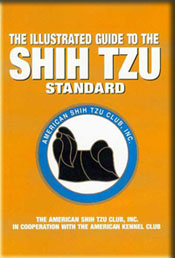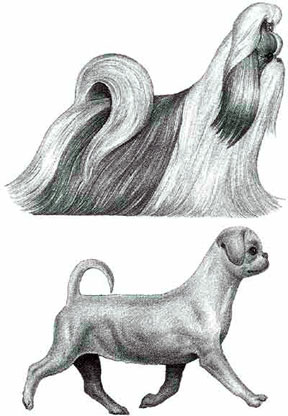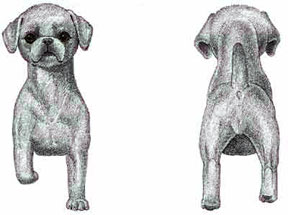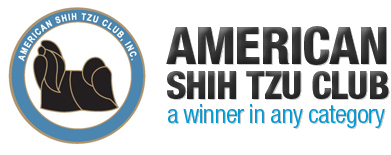The Illustrated Guide To The Shih Tzu Standard | Gait
 CONTENTS: Front Cover | Preface | History | Anatomy | Standard | General Appearance | Size, Substance | Proportion | Head | Neck, Body | Topline | Tail | Forequarters | Hindquarters | Coat, Trimming, Color and Markings | GAIT
CONTENTS: Front Cover | Preface | History | Anatomy | Standard | General Appearance | Size, Substance | Proportion | Head | Neck, Body | Topline | Tail | Forequarters | Hindquarters | Coat, Trimming, Color and Markings | GAIT


 GAIT – The Shih Tzu moves straight and must be shown at its own natural speed, neither raced nor strung-up, to evaluate its smooth, flowing, effortless movement with good front reach and equally strong rear drive, level topline, naturally high head carriage, and tail carried in gentle curve over back. CLARIFICATION: The Shih Tzu in motion should appear as he does standing, with high head carriage and well-angulated shoulders, leading into a hard level topline with a high tailset. The front should move straight with the legs extending straight from the body with no toeing in or out, and the elbows should remain close to the body. From the rear, the legs should extend straight out from the body, and should remain close to the body. From the rear, the legs should extend straight out from the body and the pads of the feet should be visible. The Shih Tzu should never single track. The proper side movement emphasizes the balance between the front and the rear, and there should be no bounce or roll to the gait. The wording in the standard, “strung up”, does NOT mean the Shih Tzu should be shown on a “dead loose lead”. The exhibitor should be able to have enough tension in the lead to guide and direct the dog, especially young not fully trained dogs. However, a dog should NOT be shown on an extremely tight lead, which tends to lift the forequarters off the ground. Excessive speed in the ring makes it extremely difficult to evaluate proper movement.
GAIT – The Shih Tzu moves straight and must be shown at its own natural speed, neither raced nor strung-up, to evaluate its smooth, flowing, effortless movement with good front reach and equally strong rear drive, level topline, naturally high head carriage, and tail carried in gentle curve over back. CLARIFICATION: The Shih Tzu in motion should appear as he does standing, with high head carriage and well-angulated shoulders, leading into a hard level topline with a high tailset. The front should move straight with the legs extending straight from the body with no toeing in or out, and the elbows should remain close to the body. From the rear, the legs should extend straight out from the body, and should remain close to the body. From the rear, the legs should extend straight out from the body and the pads of the feet should be visible. The Shih Tzu should never single track. The proper side movement emphasizes the balance between the front and the rear, and there should be no bounce or roll to the gait. The wording in the standard, “strung up”, does NOT mean the Shih Tzu should be shown on a “dead loose lead”. The exhibitor should be able to have enough tension in the lead to guide and direct the dog, especially young not fully trained dogs. However, a dog should NOT be shown on an extremely tight lead, which tends to lift the forequarters off the ground. Excessive speed in the ring makes it extremely difficult to evaluate proper movement.
